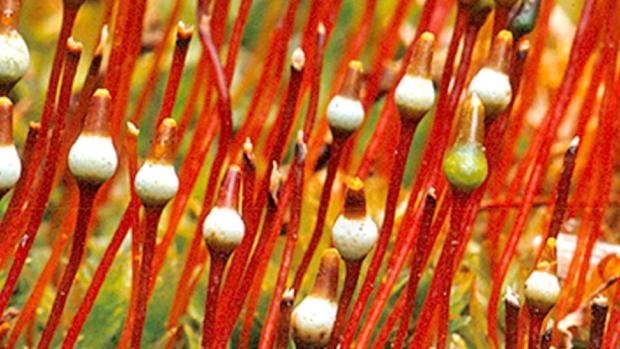Botanical Archives project wins National Endowment for the Humanities funding

Bryophytes, the informal group name for mosses, liverworts and hornworts Source: www.nybg.org
More and more museums are digitizing their collections, making it feasible to experience paintings and even sculptures, which can be rendered in 3D and viewed online from every angle, without ever visiting in person.
Botanical gardens, as well, are digitizing their own collections, often replicating the standard format of displaying specimens as dried cuttings affixed to sheets called herbarium mounting paper. A problem arises in the case of mosses. Those flowerless plants — which reproduce by spores and grow in tufts or mats on tree trunks, rocks, and other moist surfaces — can often appear as an unilluminating brown smudge on the page.
Elaine M. Ayers, a Faculty Fellow in NYU’s Graduate School of Arts and Science Program in Museum Studies, realized that new imaging techniques, such as high-resolution 3D scanning and multispectral photography, presented in conjunction with experimental web interfaces, could present moss in a rich, new light–giving increased visibility and insight into a sometimes overlooked but vital part of our ecosystem.
She is now collaborating on a project, “Thinking With Moss: Troubling Botanical Archives through Critical Interfaces and Imaging Technics,” with NYU Tandon researchers, including Industry Assistant Professor (and co-principal investigator) Tega Brain, who studies how technology shapes ecology, and Assistant Professor of Practice Ahmed Ansari, who works at the intersections between design studies and history, the philosophy of technology, and critical cultural studies.
Undertaken in partnership with the New York Botanic Gardens, the project seeks to discover the advantages that new imaging methods can offer to those studying mosses, whose microscopic bodies are now nearly indiscernible in downloadable digitized herbarium sheets — as well as to build a collective understanding of how botanic research takes place and to articulate how alternative structures, such as species-centered archives or affirmatively decolonized histories could be conveyed publically.
“Thinking with Moss” recently garnered a $50,000 Digital Public Discovery Grant from the National Endowment for the Humanities that will allow the investigators to launch a series of workshops bringing together experts from botany, the history of science, design, and digital media.
“While they lack the bright colors of popular flowering plants and the economic impact of crops like rice, mosses have an important part to play in the natural world — stabilizing the soil surface, retaining water, and helping other plants thrive,” Brain explains. “We’re excited about using them as a jumping-off point to radically reimagine how we present the biosphere and its history — an especially urgent pursuit given the current extinction crisis.”




